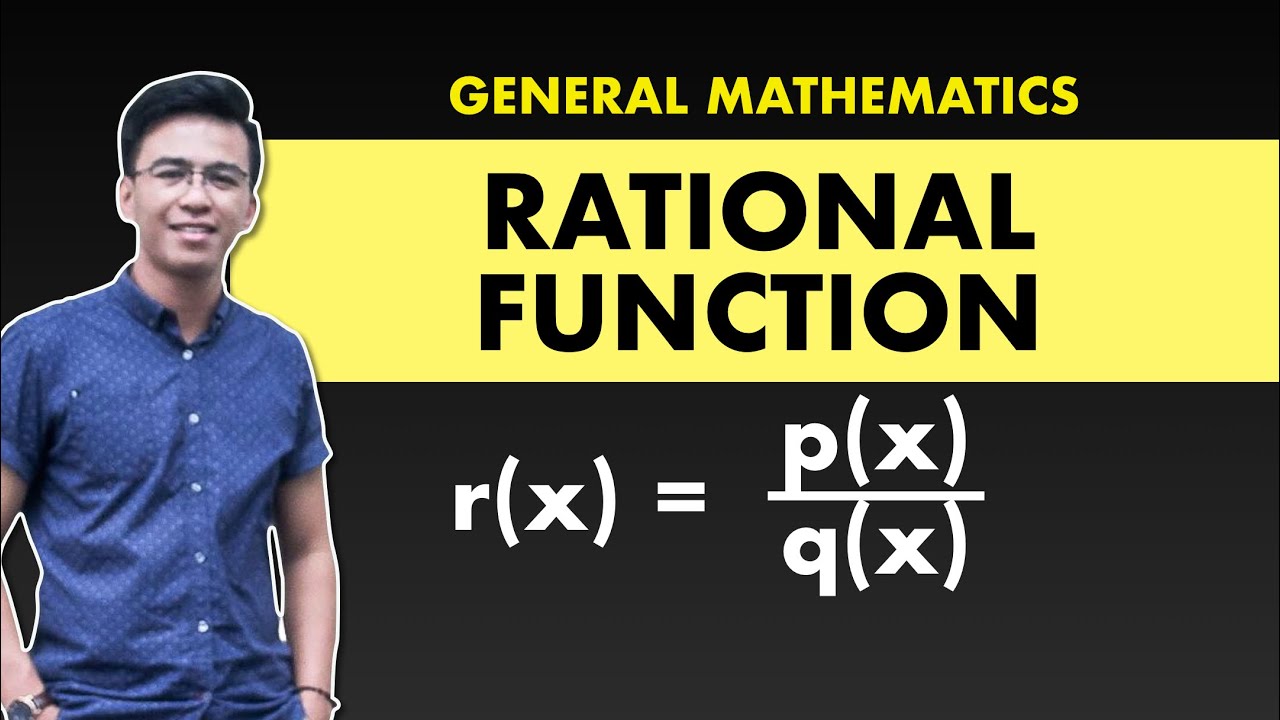Trik Cepat Menyelesaikan Limit Fungsi Tak Hingga dalam Bentuk Pembagian dg Pangkat Tertinggi #part1
Summary
TLDRIn this video, the presenter explains the concept of limits involving rational functions with high powers. They demonstrate how to solve limits where both the numerator and denominator contain terms with powers of x. Using the example of the function (6x^5 - 7x + 5) / (3x^5 - 2x^2), the presenter simplifies the problem by focusing on the terms with the highest powers. By comparing the coefficients of these terms, the limit is calculated as 2, providing a clear and simple explanation for solving such limits.
Takeaways
- 😀 The video focuses on solving limits of functions with the highest powers in both the numerator and denominator.
- 😀 The formula presented involves terms like AX^m + BX + C in the numerator and PX^n + R in the denominator.
- 😀 The general form of the limit being discussed is limit as x approaches infinity for expressions involving polynomial terms.
- 😀 A key point is the idea that when the powers of x in the numerator and denominator are the same, you can directly simplify the limit by dividing the coefficients.
- 😀 The example given involves the expression 6x^5 - 7x + 5 in the numerator and 3x^5 - 2x^2 in the denominator.
- 😀 In the given example, the highest power of x in both the numerator and denominator is 5, allowing for a straightforward division of the leading coefficients.
- 😀 The limit of the function as x approaches infinity is computed as the ratio of the leading coefficients: 6/3.
- 😀 The result of dividing 6 by 3 gives a final answer of 2 for the limit of the function as x approaches infinity.
- 😀 The video emphasizes the importance of focusing on the highest degree terms when solving such limits.
- 😀 The script concludes by stating that this method of simplifying limits is easy and efficient once you understand the process.
Q & A
What is the main topic of the script?
-The main topic of the script is solving the limit of a rational function as x approaches infinity, specifically with polynomial functions in both the numerator and denominator.
What is the general form of the limit function discussed in the script?
-The general form of the limit function discussed is: limit as x approaches infinity of (AX^m + BX + C) / (PX^n + QX + R).
How do we determine the limit of a rational function where the degrees of the numerator and denominator are the same?
-When the degrees of the numerator and denominator are the same, the limit is found by dividing the leading coefficients of the highest degree terms of the numerator and the denominator.
What is the specific function used in the script example?
-The specific function used in the script example is: (6x^5 - 7x + 5) / (3x^5 - 2x^2).
How do we identify the leading terms in the function provided?
-The leading terms are identified as the terms with the highest power of x. In this case, the leading terms are 6x^5 in the numerator and 3x^5 in the denominator.
What do the coefficients 'a' and 'b' represent in the context of the function?
-In the context of the function, 'a' represents the leading coefficient of the numerator (6), and 'b' represents the leading coefficient of the denominator (3).
How do we calculate the limit of the function?
-The limit is calculated by dividing the leading coefficient of the numerator (6) by the leading coefficient of the denominator (3), resulting in 6/3 = 2.
What is the result of the limit as x approaches infinity for the given function?
-The result of the limit as x approaches infinity for the given function is 2.
Why can we disregard the lower degree terms in this type of limit problem?
-We can disregard the lower degree terms because as x approaches infinity, the higher degree terms dominate the behavior of the function, making the lower degree terms negligible.
What makes this type of limit problem 'easy' to solve, according to the speaker?
-This type of limit problem is considered 'easy' because the degrees of the numerator and denominator are the same, and the limit can be quickly determined by simply dividing the leading coefficients.
Outlines

This section is available to paid users only. Please upgrade to access this part.
Upgrade NowMindmap

This section is available to paid users only. Please upgrade to access this part.
Upgrade NowKeywords

This section is available to paid users only. Please upgrade to access this part.
Upgrade NowHighlights

This section is available to paid users only. Please upgrade to access this part.
Upgrade NowTranscripts

This section is available to paid users only. Please upgrade to access this part.
Upgrade NowBrowse More Related Video

Limit Kalkulus Part 4 – Limit Tak Hingga & Asimtot Datar dan Tegak

Relasi dan Fungsi Matematika Kelas 10 • Part 26: Fungsi Rasional Bentuk 3 - Kuadrat / Linear

Cálculo: Introdução e Noção Intuitiva de Limites (Aula 1 de 15)

Fungsi Rasional Bentuk 1 (Domain, Range, Cara Menggambar)

Rational Functions | General Mathematics

Ganzrationale Funktionen (Polynomfunktionen) - Einführung / Grundlagen
5.0 / 5 (0 votes)